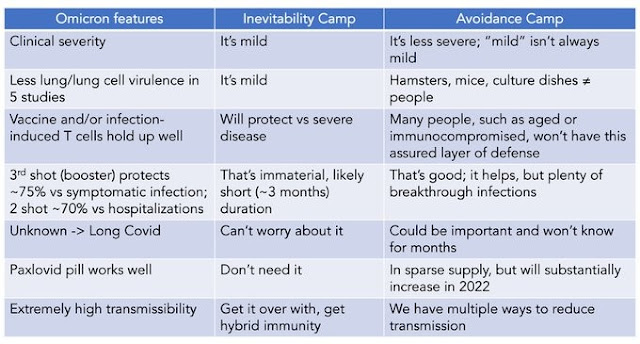On 01/20/2021, an article was published on New York Times with an alarming title:
Emerging Coronavirus Variants May Pose Challenges to Vaccines
But experts who reviewed the papers agreed that the findings raised two disturbing possibilities. People who had survived mild infections with the coronavirus may still be vulnerable to infection with a new variant; and more worryingly, the vaccines may be less effective against the variants.
Another article also showed up on National Geographic with the below title:
COVID-19 will likely be with us forever. Here's how we'll live with it.
Depending on how these three factors
- How long humans retain immunity to the virus
- How quickly the virus evolves
- How widely older populations become immune during the pandemic itself
shake out, the world could be facing several years of a halting post-pandemic transition—one marked by continued viral evolution, localized outbreaks, and possibly multiple rounds of updated vaccinations.
In this article, we will follow up with a series of articles written by William A. Haseltine on Forbes to discuss a potential more realistic expectation with Covid-19 (i.e., We need to live with SARS-CoV-2 forever) from the scientific perspective.
Partial Immunity—Worst Case: Immunocompromised Persons
Immune Evasion
Partial protection from human's immunity confers the opportunities of virus's immune evasion. Random variation is an essential component of all living things. It drives diversity, and it is why there are so many different species. Viruses are no exception.
 |
| Figure 2. New variants in the making (source: @EricTopol) |
Virus Evolution Dynamics
- In individuals
- Between individuals
- Around the globe
Most of us, when we catch either of these viruses, will develop a transient infection — meaning the duration of our sickness has a definite beginning and end. But a small fraction of people develop prolonged infections, either stretching on for weeks or months without pause or subsiding only to return with a vengeance. Chinese health authorities estimate that for Covid-19, this population of long-term shedders is as high as five percent.[3]
Parallel Mutations
For SARS-CoV-2, mutations that occur in and around the spike protein — which the virus uses to bind to and hijack our cells — have been the primary focus and worry. In the influenza genome, it was another surface protein known as hemagglutinin that researchers flagged as a hotspot for variation.
In both cases, specific mutations occur in specific places in viral genomes found in specific patients — in addition to being identified in variants that occur globally. The researchers studying the flu called these “parallel mutations.”
Possible Explanation for Parallel Mutations
There are two possible explanations for why parallel mutations occur.
One option is that new variants of SARS-CoV-2 and influenza actually have their origins in immunocompromised patients. The other — less linear, more diffuse — option is simply that a virus’s drive and tendency towards change is as active and dynamic in the human body as it is in human populations.
Either way, it begins to make more sense that the same infinitesimal changes to SARS-CoV-2, in some cases limited to a single amino acid, are popping up in different parts of the world. Expose the virus to similar selective pressures and challenges — namely, partial immunity — and it will adapt in similar ways.
 |
| Source: @EricTopol |
Conclusion
As Haseltine said:
If I were to make a prediction based on what we’ve seen of SARS-CoV-2 and its capacity for variation so far, I’d say it is much more like influenza than any other virus we know of.
Similarly in [2], scientists also extrapolate their research findings from common human coronaviruses (i.e., Human coronavirus 229E, it is one of the viruses responsible for the common cold.) to SARS-CoV-2:
Finally, let me also conclude with what Haseltine said:The decreased neutralization of “future” viruses is due to antigenic evolution of the viral spike, especially in the receptor-binding domain. If these results extrapolate to other coronaviruses, then it may be advisable to periodically update SARS-CoV-2 vaccines.
To prepare ourselves accordingly, we must adjust our vaccine development pipelines and public health interventions more broadly to account for emergent and future variations. Otherwise we’ll be setting ourselves up to be blindsided yet again — against our best interests, and in favor of the virus’s.
References
- Parallel evolution of influenza across multiple spatiotemporal scales
- A human coronavirus evolves antigenically to escape antibody immunity
- Don’t Assume A 14-Day Quarantine Is Enough To Prevent Covid-19 Spread
- Why Patterns In Covid-19 Variation Might Resemble Seasonal Flu
- Optimizing age-specific vaccination
- If Exposed To Covid-19 Coronavirus, How Long Before You Have Symptoms
- Covid-19 Reinfection Is Possible And Should Inform Pandemic Priorities Moving Forward
- Asymptomatic Woman Sheds Coronavirus For 70 Days, How Long Are You Contagious With Covid-19?
- Myths of Vaccine Manufacturing
- Severe clinical relapse in an immunocompromised host with persistent SARS-CoV-2 infection
- If you’re hoping a vaccine is going to be a knight in shining armor saving the day, you may be in for a disappointment.
- Meet The Scientists Hunting For The Next Variant Of Concern













